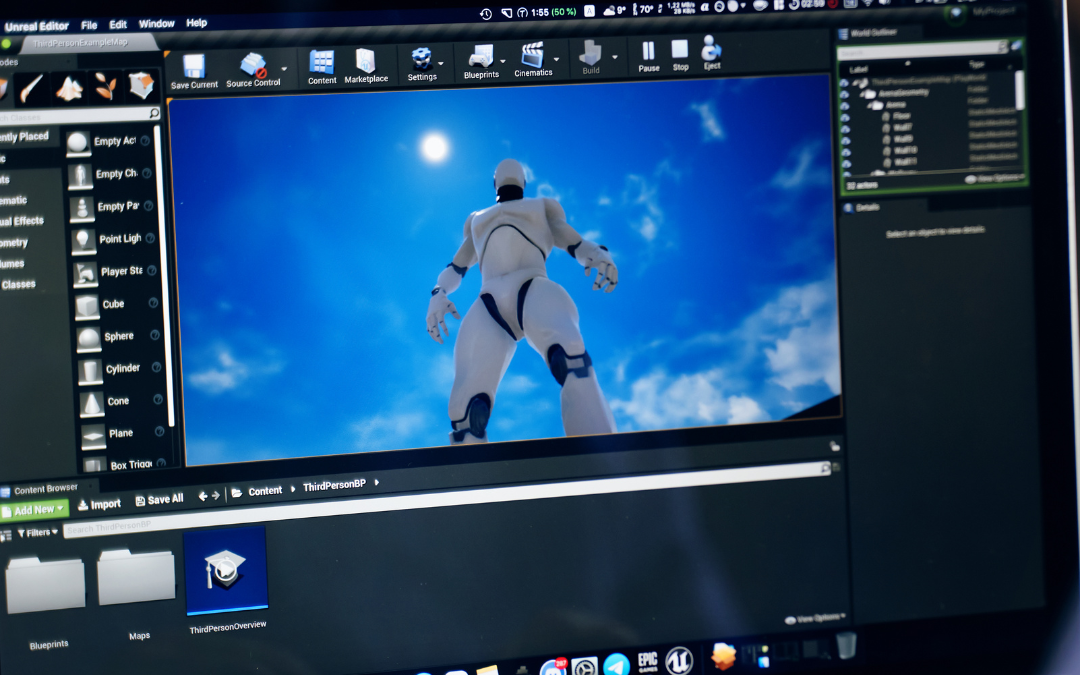The Five Most Key Takeaways from This Blog Post
- Generative A.I.’s next significant leap after the initial text-to-photo jump has to do with video. The ability to offer an A.I. that can reliably produce high-quality video based off of mere text prompts, along with other media like photos or even videos, will be one of the major features of any company that seeks to be dominant in the A.I. market. At least, the generative-A.I. market.
- Most of the major tech companies are seeking to create serviceable video-generating A.I. platforms. A characteristic of the A.I. race is that the major racers (i.e., extremely resource-rich tech companies) seek to offer multimodal gen-A.I. that can make photos, text content, videos, audio–pretty much content in all forms of digital media. The idea is to simultaneously work on all of the multimodal aspects, under the belief that even if you are not perfect in any of them, the combination of solid A.I. offerings is enough to keep you relevant to consumers at the moment. The mastery will come with time, since this is still a relatively recent field.
- Sora, which is a project of the ChatGPT creator OpenAI, is one of the most high-profile examples of video-generating A.I. Part of this comes from its marketing efforts involving extended showcases of what the Sora platform can do. You can find the playlist of Sora’s demonstrations on OpenAI’s YouTube page.
- Looking through that playlist shows business owners that there are plenty of interesting uses.
- However, its strengths are balanced out by unshown weaknesses, which we cover below.
What Is Missing Is What Matters
This rather psychoanalytical formulation is actually quite apt for analyzing these videos, which all strain so hard to show you the strengths of Sora that one may not question the weak spots.
Because of course, why would a company choose to broadcast the more troubling weak spots that the company is internally seeking to improve? Might as well just show the best of the best that the company can do at a given time.
So, what is missing here?
The Human-to-Human Challenge
What you will not find across the videos are examples of people just having one-on-one conversations and dialogue.
Many analysts are aware that this is one of the biggest pain points for pretty much all of the companies working on video-generating A.I.
Video of people talking for an extended period of time, that looks realistic enough to not belie the A.I., is difficult to generate.
Sometimes it can be pulled off, but there is quite a bit of evidence that generating such material can be a real challenge.
And that can be an issue for businesses looking to create marketing material of some not-real person advocating for a product or service. If the person has an uncanny-valley accent and morphs while talking, then that means the footage is unusable.
Deepfake Potential
One of the major issues that analysts point out about A.I. is that the guardrails set in place to inhibit the generation of deepfakes are just not adequate.
OpenAI has not demonstrated in these videos the ability of the A.I. to reject such deepfake-inviting prompts.
The Verge reports on Google’s image-generating A.I. that you can readily bypass the guardrails to not, say, generate copyrighted content, by using clever prompts that can make, for instance, Sonic the Hedgehog.
Accidental Deepfakes
This should concern business owners, because users may not even be aware that something you generate may indeed be copyrighted.
Think, for instance, of a mom-and-pop-store owner who has never seen or heard of Sonic the Hedgehog in his life. Yet because of a prompt he gives to A.I. to generate certain marketing material, he unwittingly generates Sonic the Hedgehog (even something strongly resembling Sonic) as something like a mascot for the company. In that case, he may end up facing a pretty seriously costly lawsuit for this copyright infraction that he didn’t even know he was committing.
About the GO AI Blog
Guardian Owl Digital is a digital-marketing company that offers A.I. services through its initiative GO AI, which this blog is part of.
GO AI the blog offers a combination of information about, analysis of, and editorializing on A.I. technologies of interest to business owners, with especial focus on the impact this tech will have on commerce as a whole.
Of course, so many things–pretty much everything, really–can cause trends or even significant overhaul-level changes in the business world. For example, an article about government regulations on A.I. is relevant because such regulations directly affect the business world.
So, coverage of A.I.’s wide-ranging influence can indeed be relevant, as what wider-world changes A.I. influences can, in a roundabout way, likely affect businesses.
Other Great GO AI Blog Posts
On a usual week, there are multiple GO AI blog posts going out. Here are some notable recent articles:
- For Businesses and Other Organizations, What Makes a Successful Chatbot?
- IBM Watson vs. ChatGPT vs. Gemini: How Will Each Affect Search Engines?
- Using A.I. to Find Resources for Business Owners
- How Would Restricting Open-Source A.I. Affect Business Owners?
- The EU’s A.I. Act Has Become Law: The Implications for Business Owners (Especially American)


Recent Comments